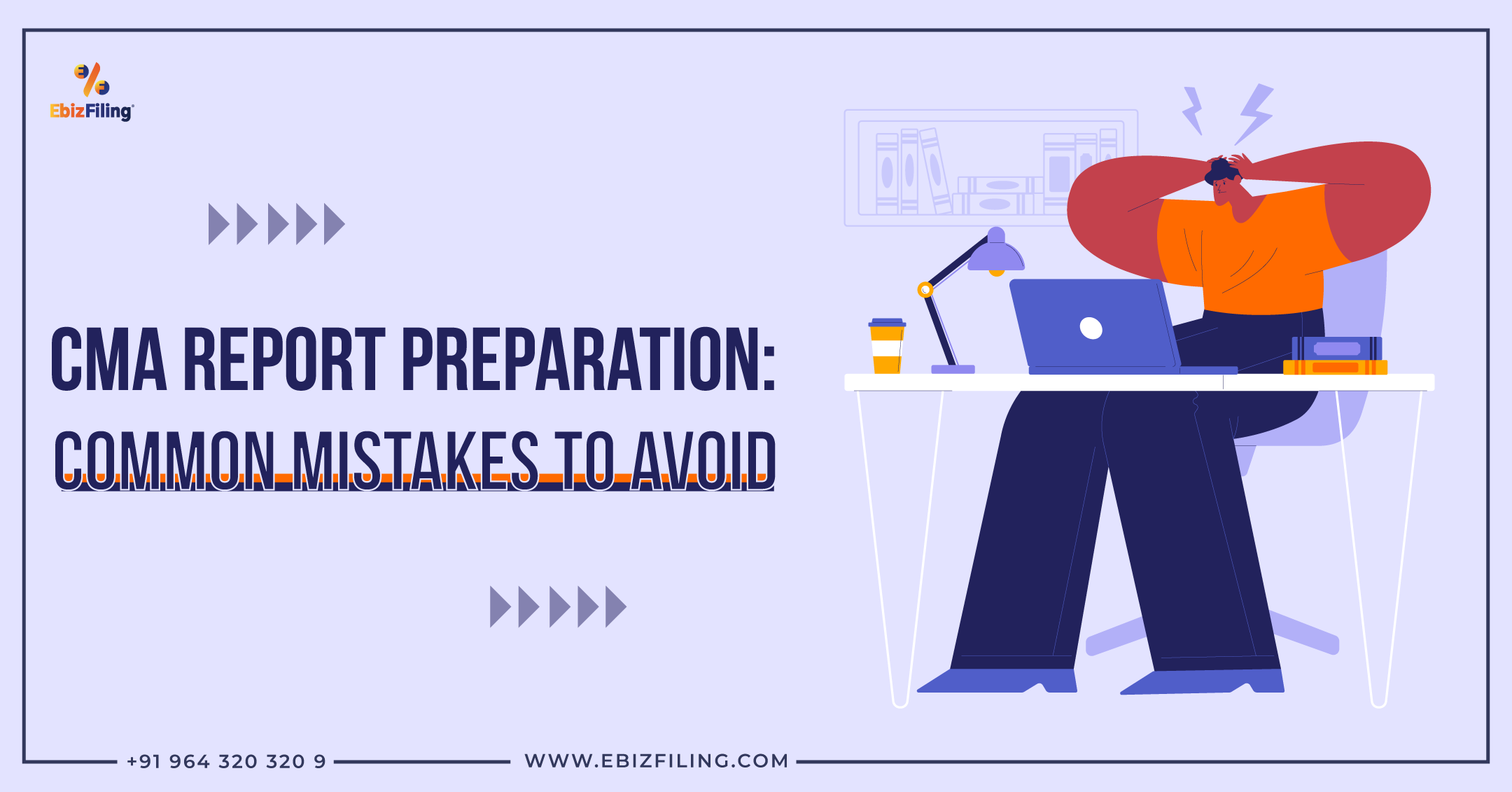
-
August 21, 2023
Common Mistakes to Avoid in CMA Report Preparation
Introduction
In the world of finance and accounting, accurate and well-prepared reports are crucial for making informed decisions. One such report that holds significant importance is the CMA (Certified Management Accountant) report. A CMA report provides critical insights into a company’s financial performance, helping management evaluate profitability, make strategic decisions, and drive growth. However, the process of preparing a CMA report can be complex, and there are several common mistakes that practitioners often make. In this blog post, we will explore what a CMA report entails, discuss the common mistakes to avoid during its preparation, and highlight the importance of addressing these errors to ensure the credibility and usefulness of the report.
What is a CMA Report?
A CMA report is a comprehensive financial document that analyzes and interprets a company’s financial statements, budgets, forecasts, and other relevant data. This report is typically prepared by management accountants or finance professionals who possess in-depth knowledge and expertise in financial analysis and reporting.
The primary purpose of a CMA report is to provide insights into a company’s financial performance, highlighting key financial indicators and trends. It assists management in understanding the organization’s strengths, weaknesses, opportunities, and threats, enabling them to make informed decisions and develop effective strategies.
What are the Common Mistakes to Avoid in CMA Report Preparation?
-
Inadequate Data Gathering: One of the most common mistakes in Certified Management Accountant report preparation is insufficient data gathering. To ensure accuracy and reliability, it is crucial to collect all the relevant financial data, including income statements, balance sheets, cash flow statements, and supporting schedules. Incomplete or inaccurate data can lead to erroneous conclusions and misinformed decisions. It is essential to employ robust data collection methods and verify the accuracy and completeness of the data before proceeding with the report preparation.
-
Lack of Standardization: Standardization is key when preparing a CMA report. Using inconsistent or non-standardized formats, calculations, and terminology can make the report difficult to understand and compare over time. It is essential to establish a set of standardized procedures, templates, and definitions to ensure consistency and clarity throughout the report. Adhering to recognized accounting principles and industry standards also enhances the credibility and comparability of the report.
-
Ignoring Non-Financial Factors: While financial data forms the foundation of a CMA report, it is essential to consider non-financial factors as well. Ignoring qualitative aspects such as market trends, competitive analysis, customer feedback, and industry benchmarks can lead to an incomplete understanding of the company’s performance. Integrating both financial and non-financial factors in the analysis provides a more holistic view, enabling better decision-making and strategic planning.
-
Lack of Contextual Analysis: Another common mistake is presenting data without proper contextual analysis. Merely presenting numbers and figures without providing insightful commentary and interpretation can result in a superficial report. It is crucial to explain the significance of the data, identify trends, and highlight key insights. Contextual analysis helps stakeholders understand the implications of the findings and supports meaningful discussions and actions based on the report.
-
Neglecting Internal Control and Review Processes: Effective internal control and review processes are vital in the preparation of a CMA report. Failing to implement these processes can result in errors, inconsistencies, and inaccuracies. Adequate review procedures should be in place to verify the accuracy of calculations, ensure the integrity of the report, and identify any potential issues. Thorough internal control measures contribute to the overall quality and reliability of the CMA report.
-
Overlooking Assumptions and Limitations: Failing to clearly state the underlying assumptions and limitations of a CMA report can undermine its credibility. Disclosing these assumptions and limitations helps stakeholders understand the boundaries within which the report operates and encourages a more nuanced interpretation of the results.
-
Failing to Tailor the Report to the Target Audience: Neglecting to customize the CMA report to the needs and expectations of different stakeholders can hinder its effectiveness. Understanding the information requirements of each audience and presenting the report in a clear, concise, and relevant format ensures that it effectively communicates the necessary information to support informed decision-making.
Conclusion
A well-prepared CMA report plays a crucial role in guiding management decisions, evaluating financial performance, and driving organizational success. However, several common mistakes can undermine the effectiveness and reliability of such reports. By avoiding these mistakes, practitioners can enhance the quality and credibility of their Certified Management Accountant reports.
Quickly Prepare CMA Data Online
Quickly prepare your CMA data online and grow your business with bank loans. Services start at INR 5999/-.
About Ebizfiling -










Reviews
Ankit Agarwal
08 Jun 2018it was pleasure doing business with you....
Jay Shah
20 Apr 2018We had a great experience working with you. Kudos to Ebizfiling for your services.
Purvi Suru
09 Jun 2018A commendable job by your team for my MSME registration. I would surely give them 5 stars!
December 12, 2025 By Dhruvi
Should business advisors learn fundraising compliance basics? To Start With, When a founder begins their startup journey, the first person they usually speak to is a business advisor, not a lawyer or an accountant. Advisors become the early voice of […]
October 30, 2025 By Dhruvi
ITR Filing Extension F.Y. 2024-25: Common Mistakes to Avoid Before the New Deadline Introduction The CBDT has extended the due dates for ITR filing and audit report submissions for FY 2024-25. The new ITR filing deadline is now 10th December […]
February 24, 2025 By Team Ebizfiling
RBI Rules for Foreign Subsidiary Companies in India The Reserve Bank of India (RBI) has certain rules for foreign companies operating in India or Indian companies with foreign investors. These rules ensure smooth business operations while following Foreign Exchange Management […]